Invest 30 seconds...
...for what may lead to a life altering association!
Help Line
- +91.8800.2828.00 (IND)
- 1030-1830 Hrs IST, Mon-Sat
- support@expertsglobal.com
...for what may lead to a life altering association!


A GMAT score report is the official record of exam performance. It includes the total score, section scores, percentile rankings, score history, and performance insights. Candidates use it to apply to business schools, analyze their performance, and plan potential retakes. Schools use it to compare applicants and assess readiness.
Need organized help with GMAT? Check out our GMAT preparation online course
The GMAT score report is a vital document in your MBA application process. It summarizes your performance on the GMAT exam and provides the quantitative evidence that admissions committees use to evaluate your academic readiness. Understanding what the report includes, how to interpret the scores, and how to use the report strategically can help you maximize your MBA admissions prospects.
A GMAT score report is an official record issued by the Graduate Management Admission Council (GMAC) that presents a candidate’s performance on the exam. It includes the total score, section scores, percentile rankings, and analytical details that provide a clear picture of performance. Business schools rely on the score report to assess academic ability and readiness for graduate-level study.
There are two types of GMAT score reports. The unofficial score report is displayed immediately after the exam and offers an instant view of the total and section scores, but it cannot be sent to schools. The official score report is the default meaning of the term GMAT score report, becomes available within 3 to 5 business days, remains valid for five years, and serves as the recognized credential forwarded to business schools.
The unofficial GMAT score report is the immediate summary displayed on the computer screen once the exam ends. It provides the Total Score along with the section scores for Quantitative Reasoning, Verbal Reasoning, and Data Insights. This report is only shown on screen; it cannot be saved, downloaded, printed, or captured in any form. Its purpose is simply to give the candidate an instant idea of performance while waiting for the official report. Business schools do not receive or use this version. Candidates may use the unofficial report to quickly assess results, reflect on whether a retake might be needed, and plan application timelines. The official GMAT score report, which becomes available a few business days later, is the formal record recognized by schools.
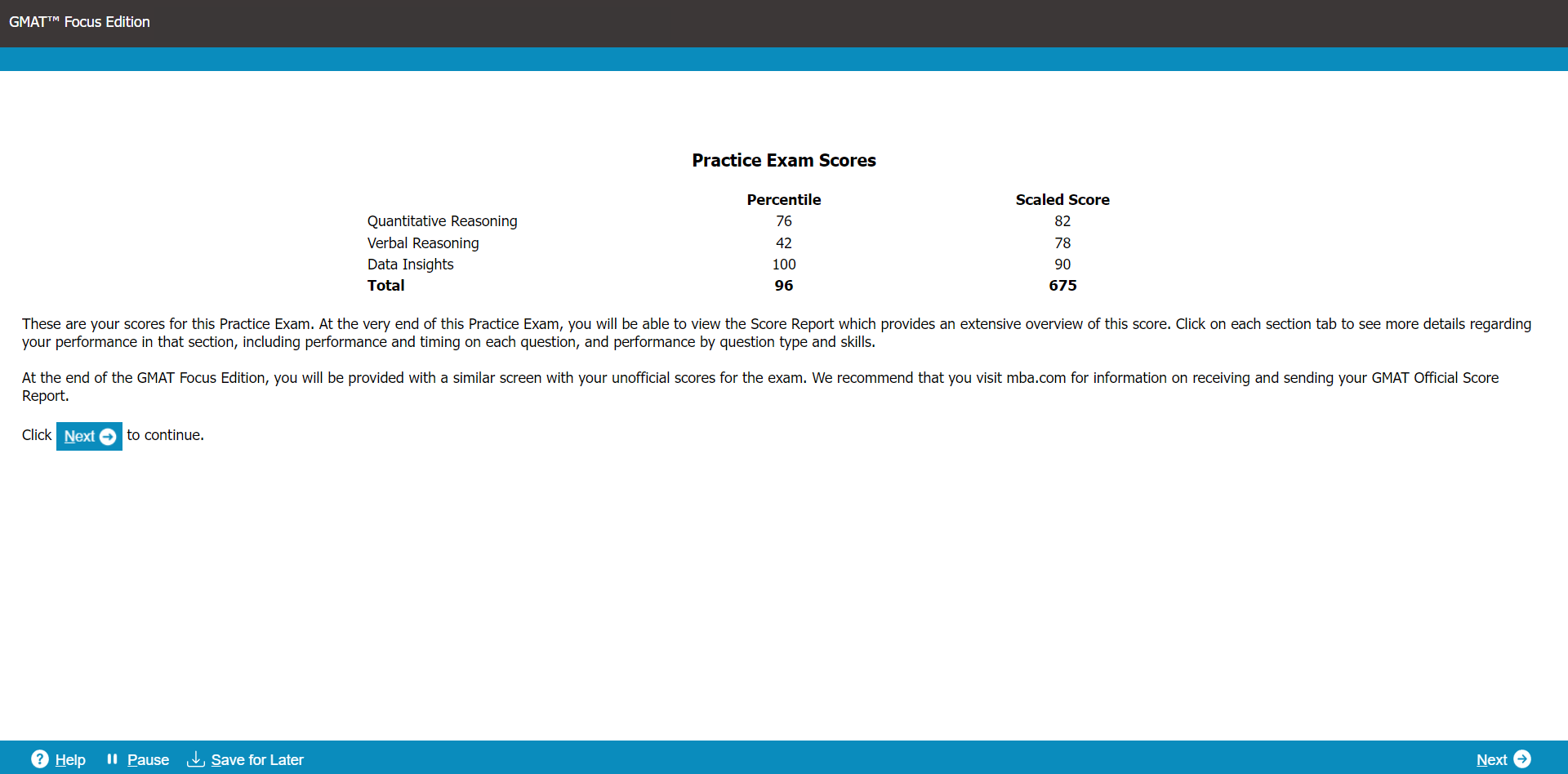
The unofficial GMAT score report cannot be shared with schools, as it only appears on the screen and cannot be stored. You may, however, enter the score manually in an application form if a deadline is approaching. Still, business schools require the official score report sent through your mba.com account for evaluation.
The official GMAT score report is the comprehensive and standardized record of a candidate’s performance, issued by GMAC. It differs from the unofficial score displayed immediately after testing, as it is the version recognized by business schools. The report is typically available within three to five business days, though in some cases it may take longer, and it remains valid for five years. It contains the total score, section scores, percentile rankings, score history, and personal details provided during registration. In addition, the modern official report incorporates detailed analytical insights that were once part of a separate Enhanced Score Report, such as breakdowns by question type, content area, and pacing analysis. Business schools rely on this report to evaluate applicants consistently, while candidates use it as their formal credential when applying to MBA and related graduate management programs.
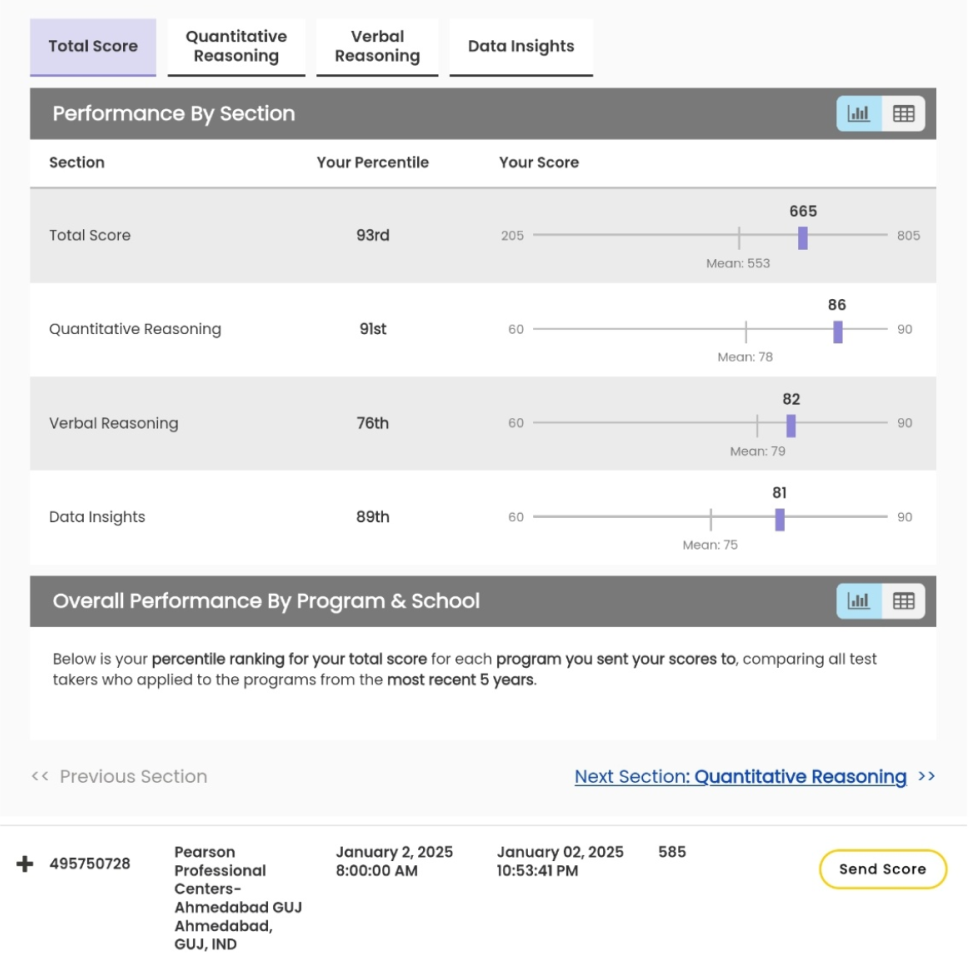
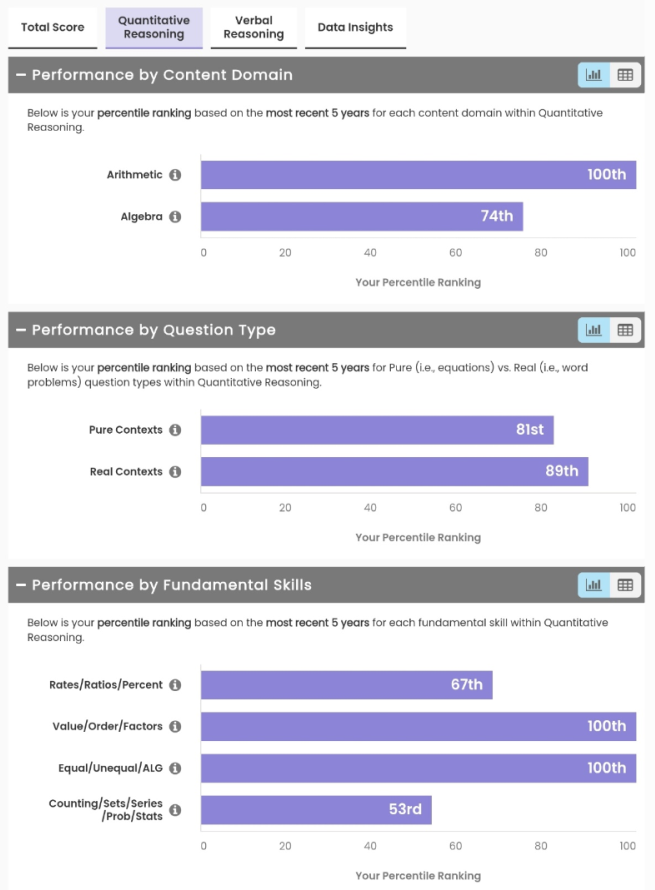
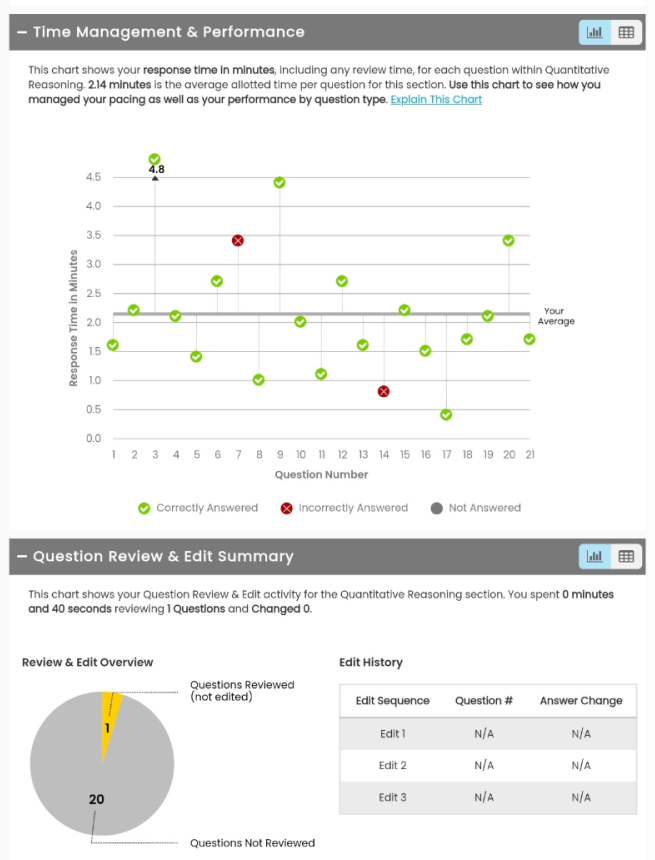
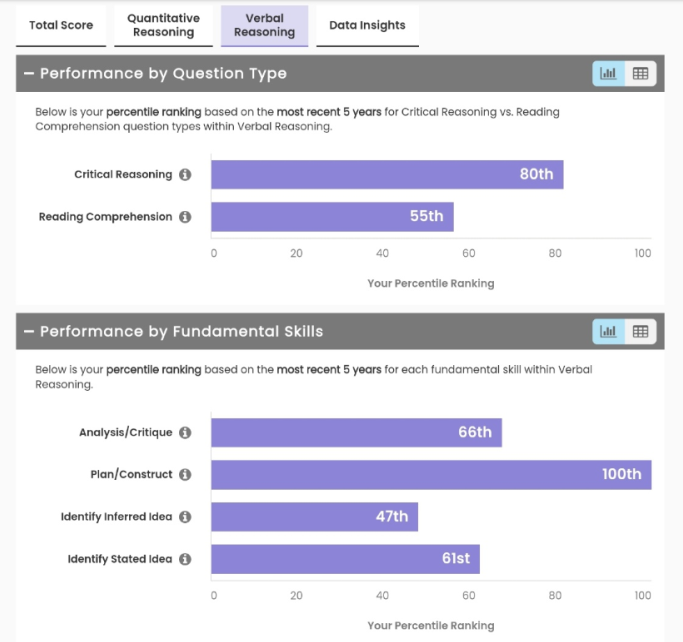
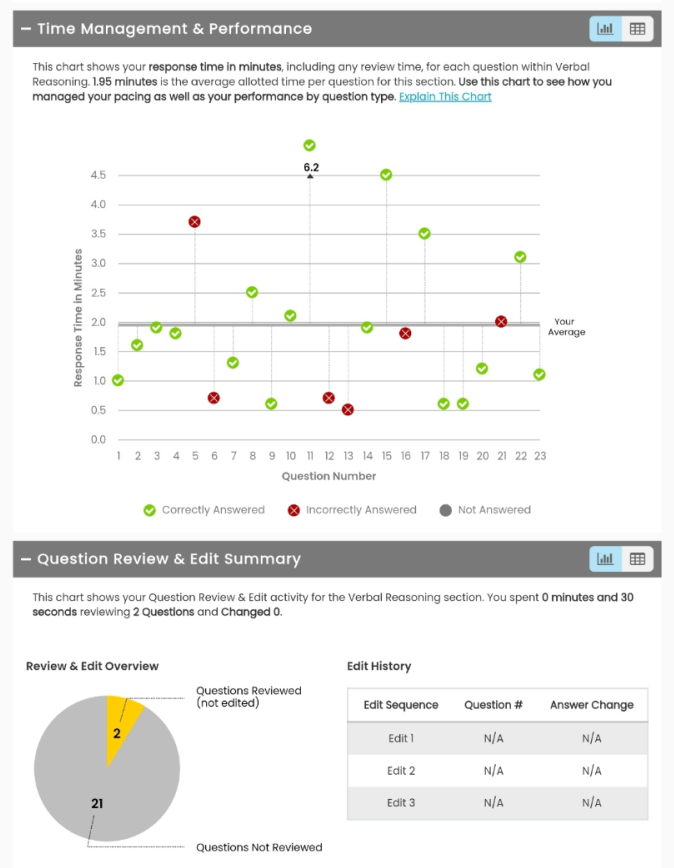
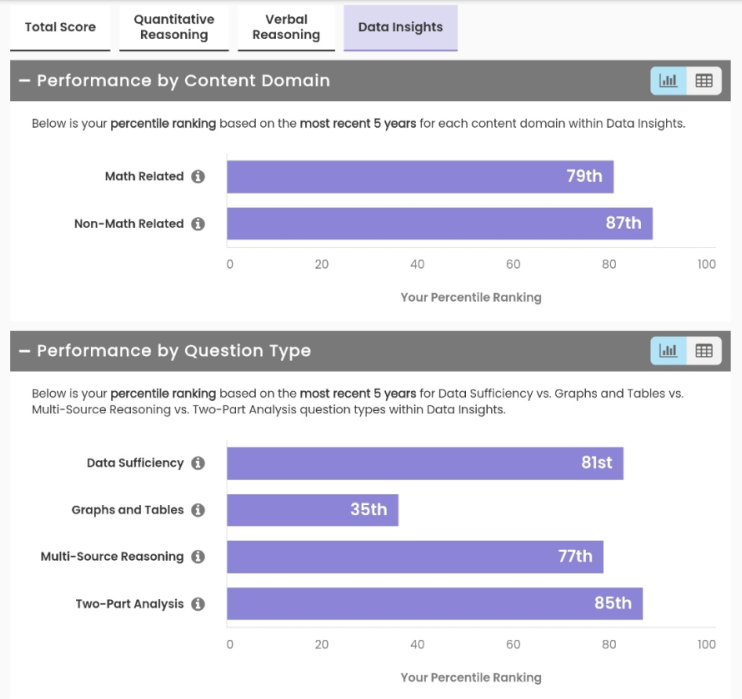
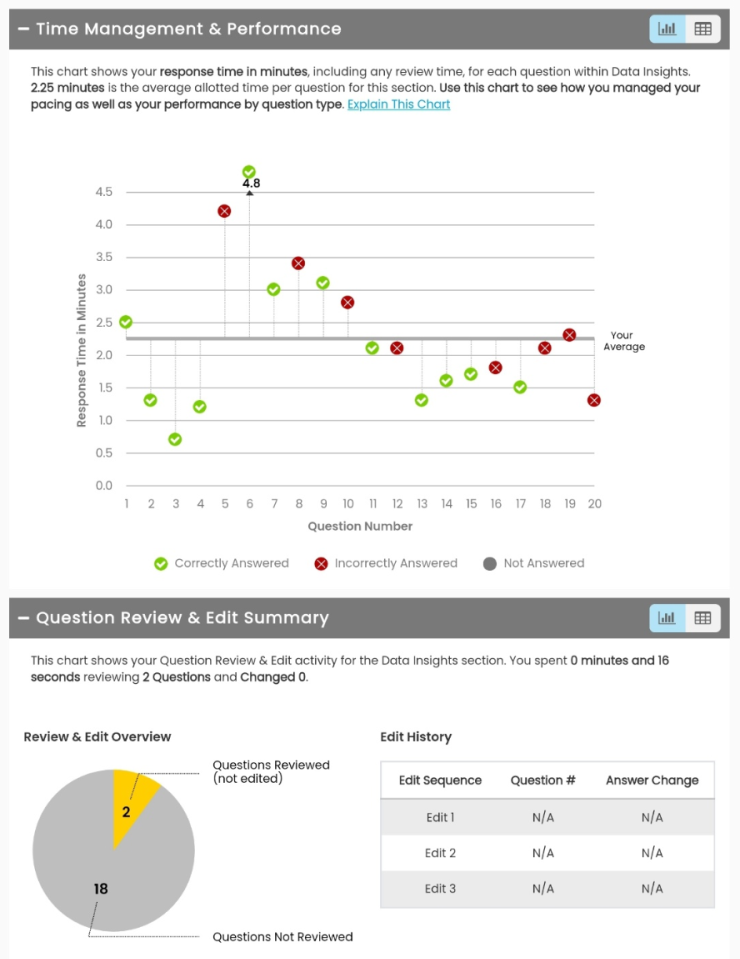
To know your current GMAT level, you may want to take a free full-length GMAT diagnostic test
The Total Score ranges from 205 to 805 and is the most prominent number on the report. It is derived equally from your performance in Quantitative Reasoning, Verbal Reasoning, and Data Insights. Schools often use this score as the primary benchmark.
Each of the three sections, Quantitative Reasoning, Verbal Reasoning, and Data Insights, is reported separately on a scale of 60 to 90. These scaled scores account for both the number and difficulty of questions answered correctly.
Each score, both total and section-wise, is accompanied by a percentile rank. Percentiles show how your performance compares with other test takers and are updated annually to reflect changes in the test-taking population.
The score report lists all GMAT exams taken in the last five years. Cancelled scores do not appear, while reinstated scores are included. You may choose which valid scores to forward to individual schools.
The report now includes analytical details that were once part of a separate paid ESR. These include performance by content domain, performance by question type, and performance by fundamental skills. Time management analysis and pacing data are also included, along with a record of reviewed and changed answers.
If you send your scores to at least one program, the report may include comparative data. This shows how your performance compares with that of other applicants to the same program over the last five years.
The report contains administrative information such as your test date, test center, GMAT ID, and personal details like name, date of birth, and email address. This ensures accuracy and identification.
If you provide details during registration, the report may also contain optional information such as undergraduate university, graduation date, and GPA. These fields are clearly marked as self-reported.
While not displayed directly on the report, each score is subject to a standard error of measurement. This indicates the small margin within which your true ability is likely to fall.
Immediately after the test, you receive unofficial scores for Quantitative, Verbal, Data Insights, and Total Score. You may accept or cancel these scores on test day or within 72 hours. Cancelled scores do not appear on reports, though they can be reinstated.
When schools receive your scores, they see your total and section scores along with percentile ranks. The detailed performance analytics available in your own report are not shared with schools.
Immediately after completing the GMAT, you will see your unofficial score on screen. This includes your total score and section scores but not your official percentile rankings. The official GMAT score report is typically available within three to five business days after your test. You will receive an email notifying you that your scores are ready in your mba.com account.
The official GMAT score report is released within three to five business days after the exam. Once available, scores forwarded electronically through mba.com are typically delivered to chosen programs within eight hours.
You can forward your GMAT scores through your account on mba.com. You are allowed to send your GMAT scores to up to five business schools for free within 48 hours of receiving your official scores. After that window, you may still send scores, but each additional report requires a fee. You can send scores from different test dates to different schools, and each report reflects only the scores from one test attempt.
Business schools receive official GMAT score reports directly from GMAC. These reports show your total and section scores, percentile rankings, and only the valid scores that you have chosen to share. Cancelled attempts are not included; the schools do not see any cancelled scores.
Admissions committees rely heavily on GMAT scores to assess an applicant’s readiness for the academic demands of a business program. The score report offers standardized data that can be compared across all candidates. Strong section scores may also help demonstrate competence in specific areas, such as quantitative reasoning for finance-focused programs or verbal reasoning for programs that emphasize communication and leadership.
Your GMAT score report can be more than just a summary of numbers. Here is how to use it to your advantage:
Use section scores and percentile data to understand where you excel and where you may need to strengthen your profile.
A high score in a particular section can reinforce your strengths, such as a strong Verbal score supporting a liberal arts background.
Research the average GMAT scores for your target programs. Ensure your scores align with or exceed those benchmarks. Remember, you must research the average score, taking into account not only your targeted program but also your specific profile. The admissions committee will judge you against others of your demographic.
If your scores fall below your target schools’ expectations or are not balanced across sections, consider retaking the exam.
Regular GMAT mock tests under exam-like conditions keep you in touch with every section and topic, help build stamina, sharpen test taking strategies, and make exam day feel familiar. Duly analyze each mock. Note weak areas, timing slips, and recurring mistakes, then fix them in your next study cycle. Take mocks throughout your preparation. In the early weeks keep the frequency low, then increase it as your test date nears. Do not save mocks only for the end. Your best score grows from steady, honest practice.
The GMAT score report is a central part of your business school application and deserves close attention. Understanding its structure and implications can help you use it to your advantage. From knowing when and how to send your scores to interpreting what each number means, being informed about the GMAT score report will help you make strategic choices in your MBA journey.